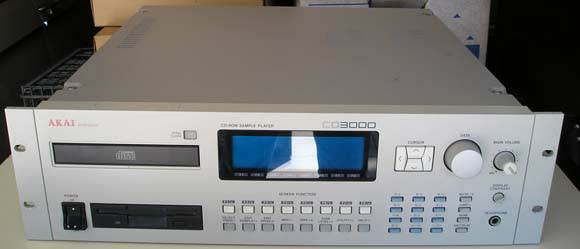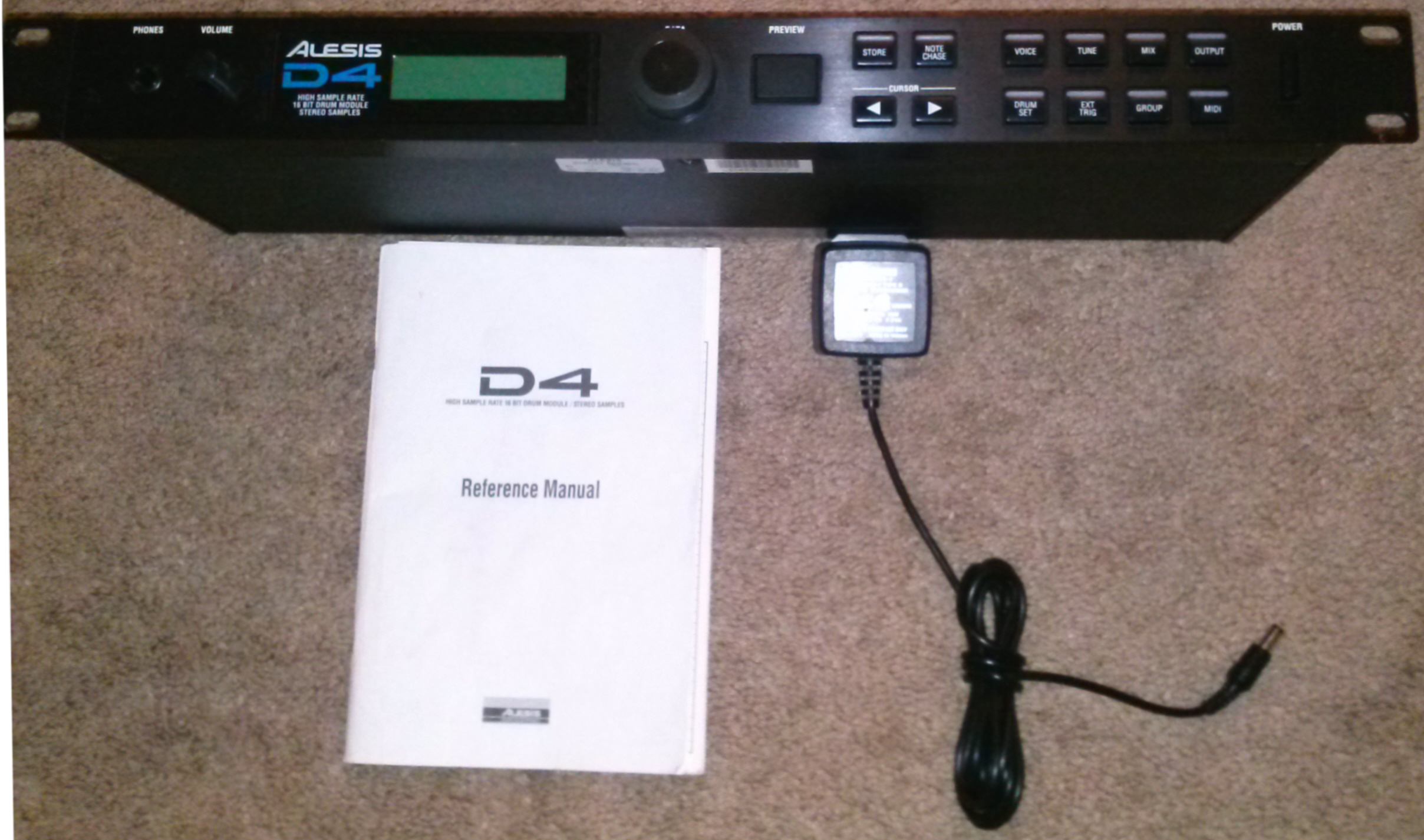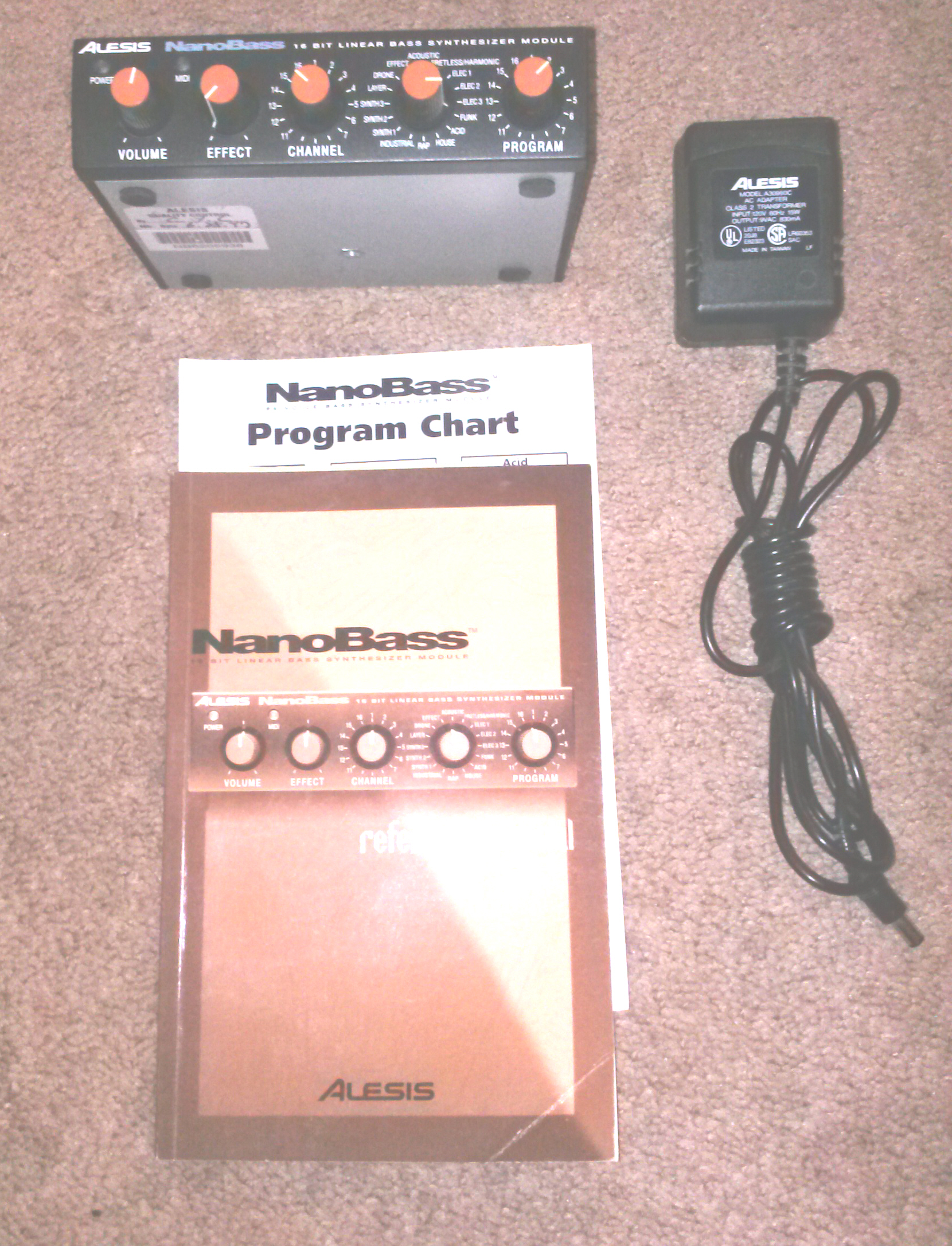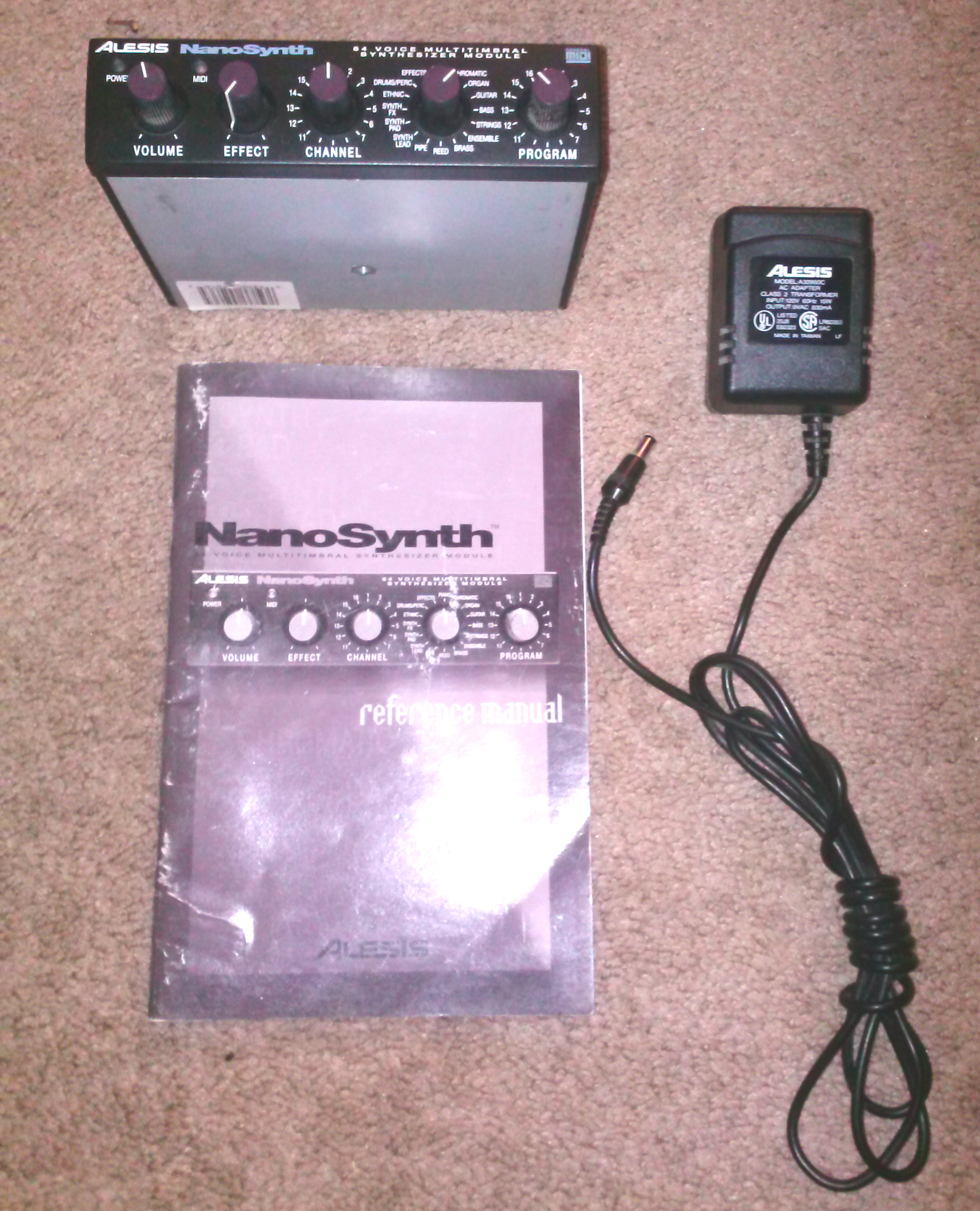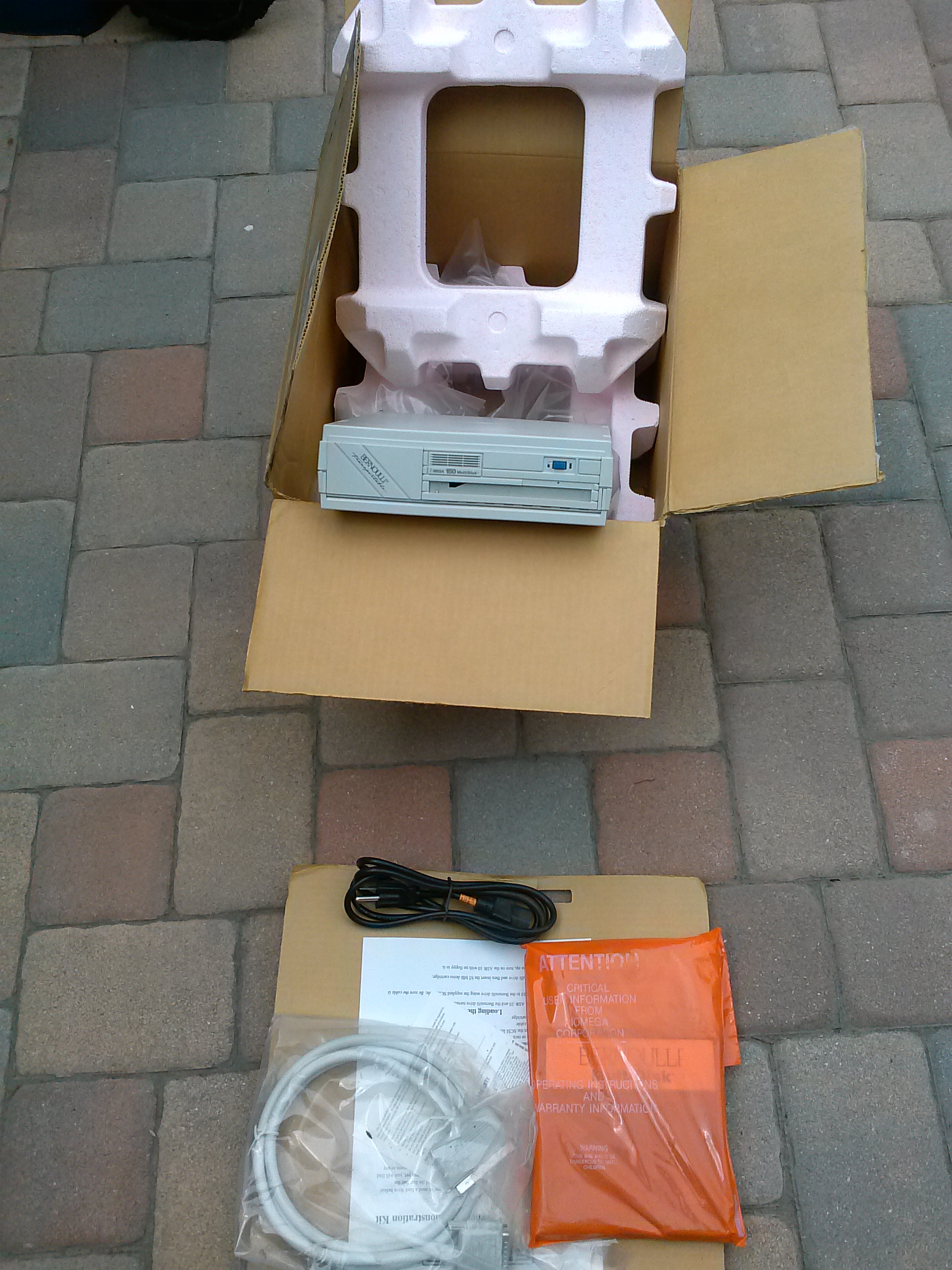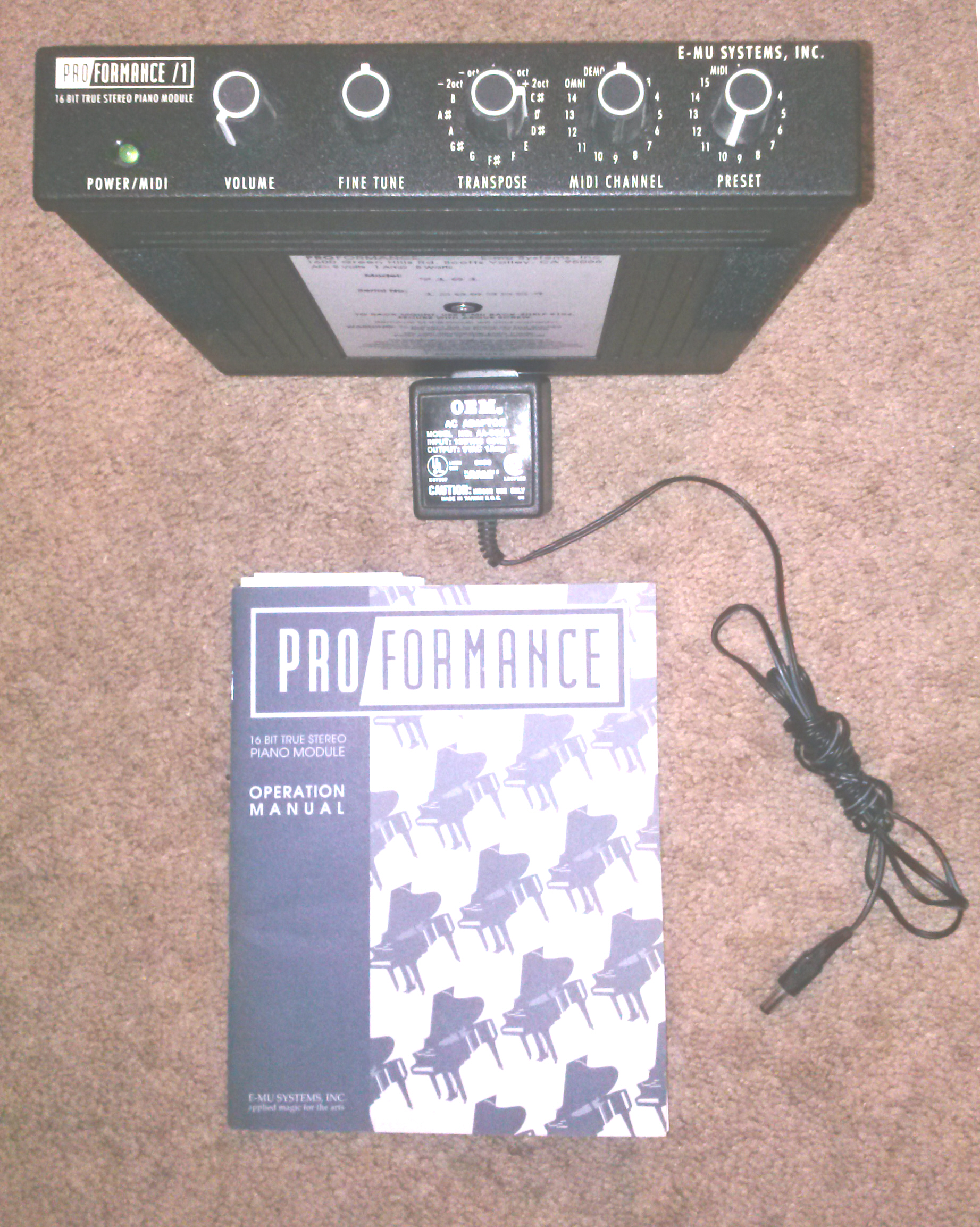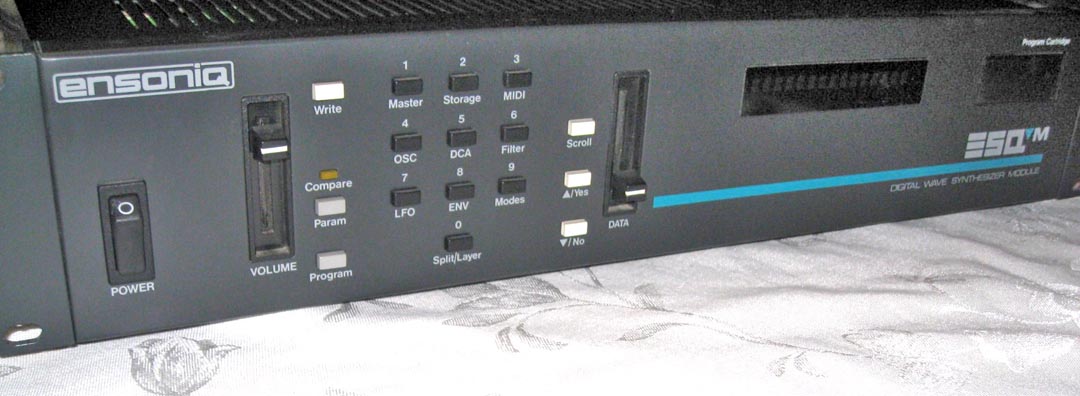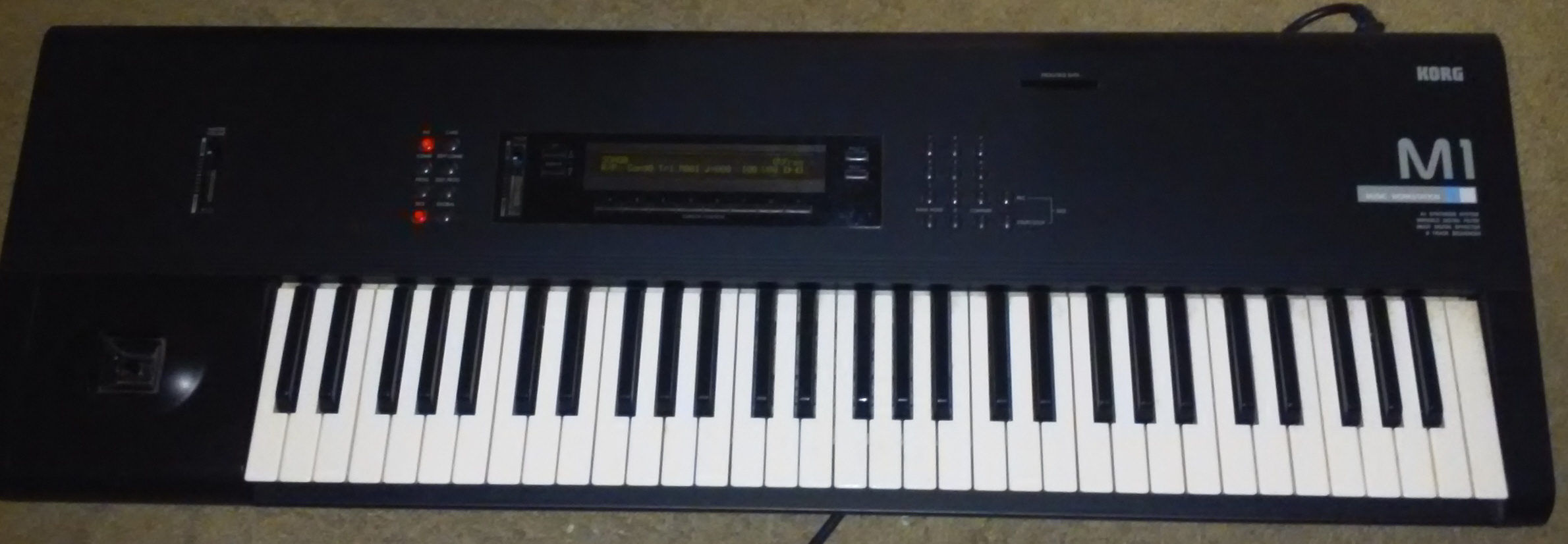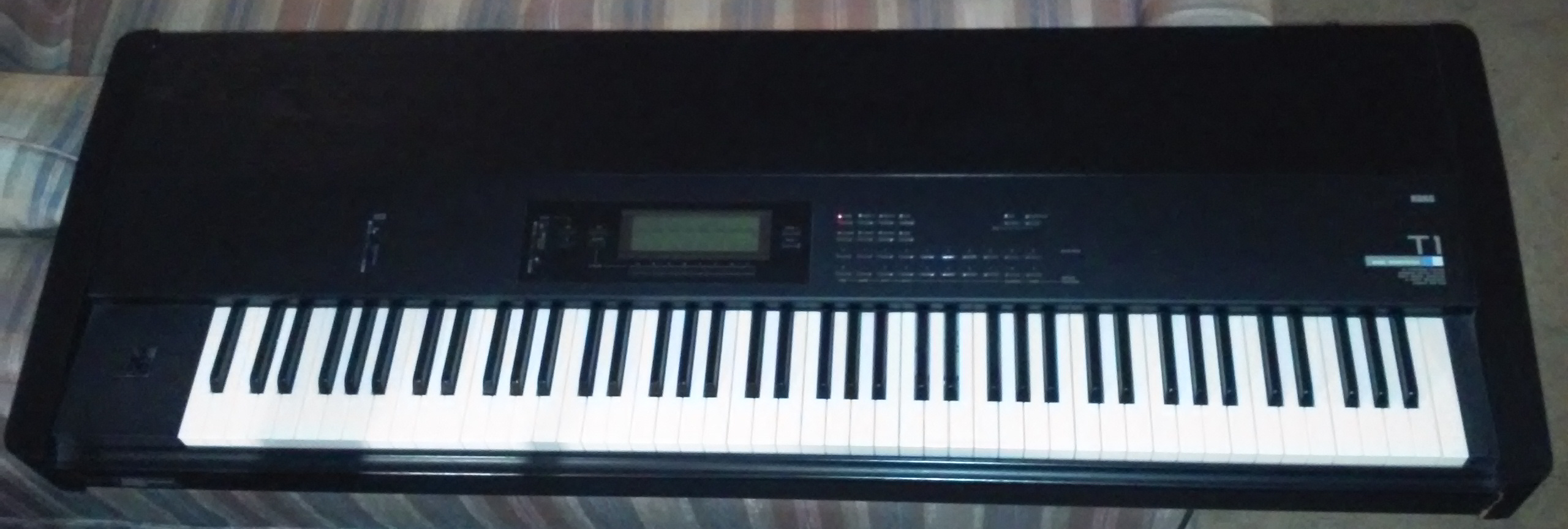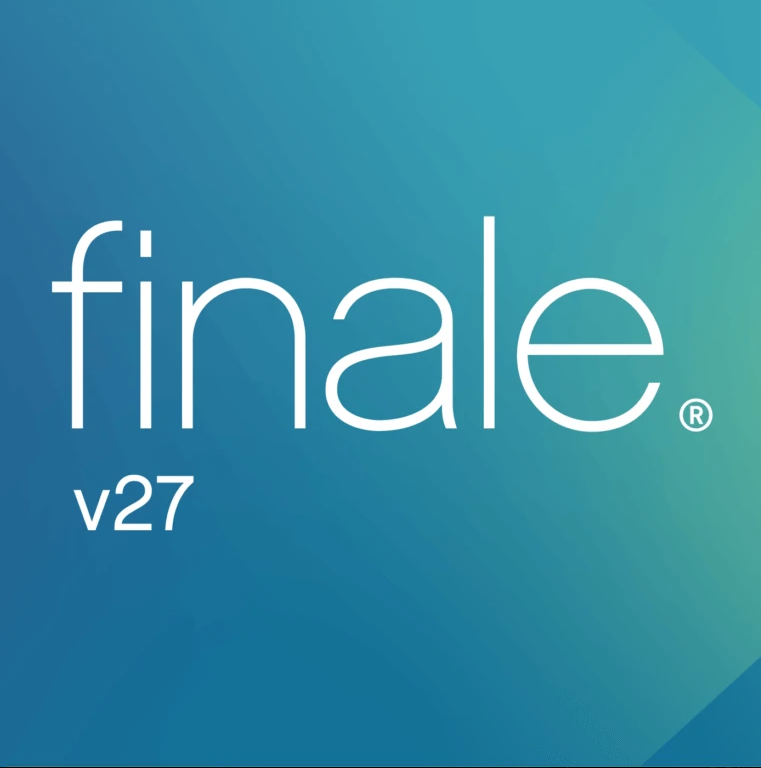Manufacturers
Categories
- Audio Recording Hardware - (306)
- Bargain Basement - (91)
- Computers - (5)
- DJ Hardware and Software - (20)
- EMB Book Shop - (187)
- Guitar - (89)
- Live Sound - (88)
- MIDI Hardware - (73)
- Music Software - (1140)
- Support/Lessons - (6)
- Used Gear - (139)
- -Audio MIDI Hardware Used - (13)
- -Basses - (1)
- -Computers - (10)
- -DJ Hardware
- -Guitars - (10)
- -Keyboard Ram & Roms Used - (10)
- -Keyboards and Modules - (33)
- -Pro Audio - (58)
- -Studio Rack & Furniture - (4)
- Video Creation Hardware Software - (8)
Specials [more]
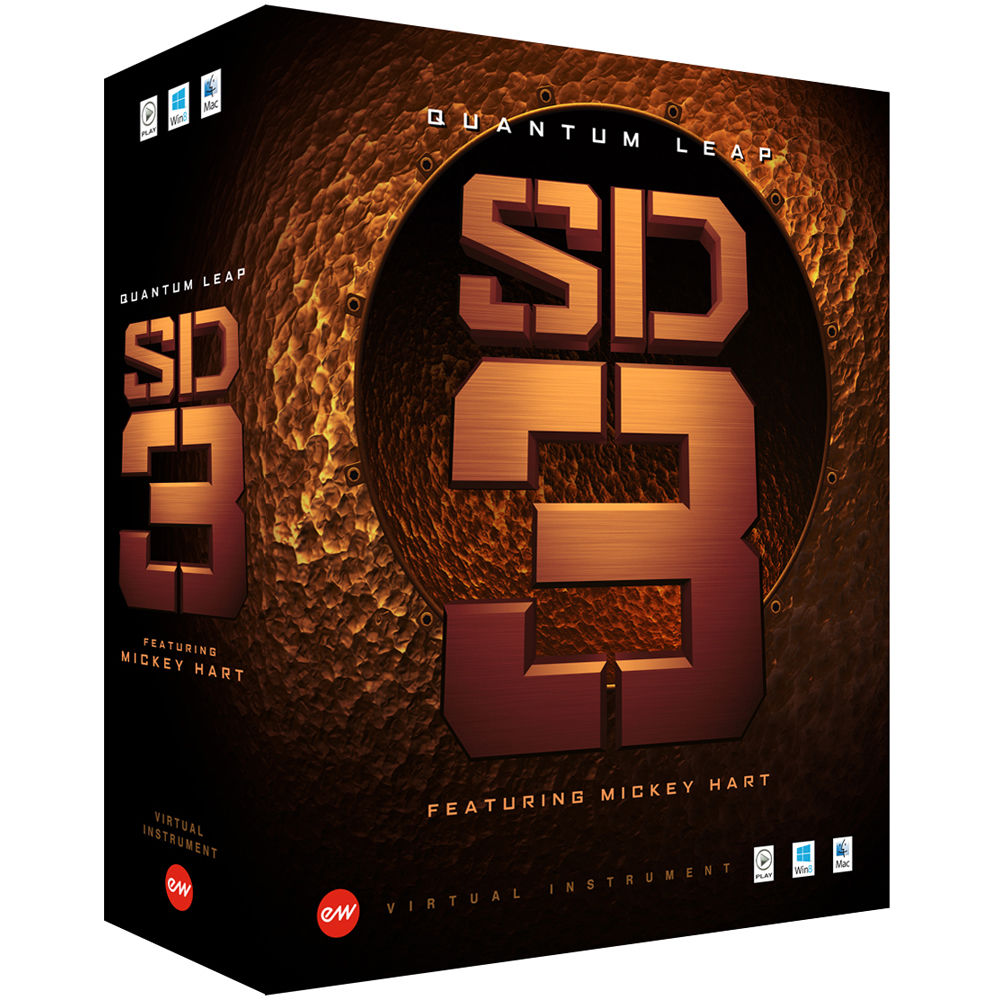
EastWest Stormdrum 3 Mac PC Instrument eLicense
Save: 47% off
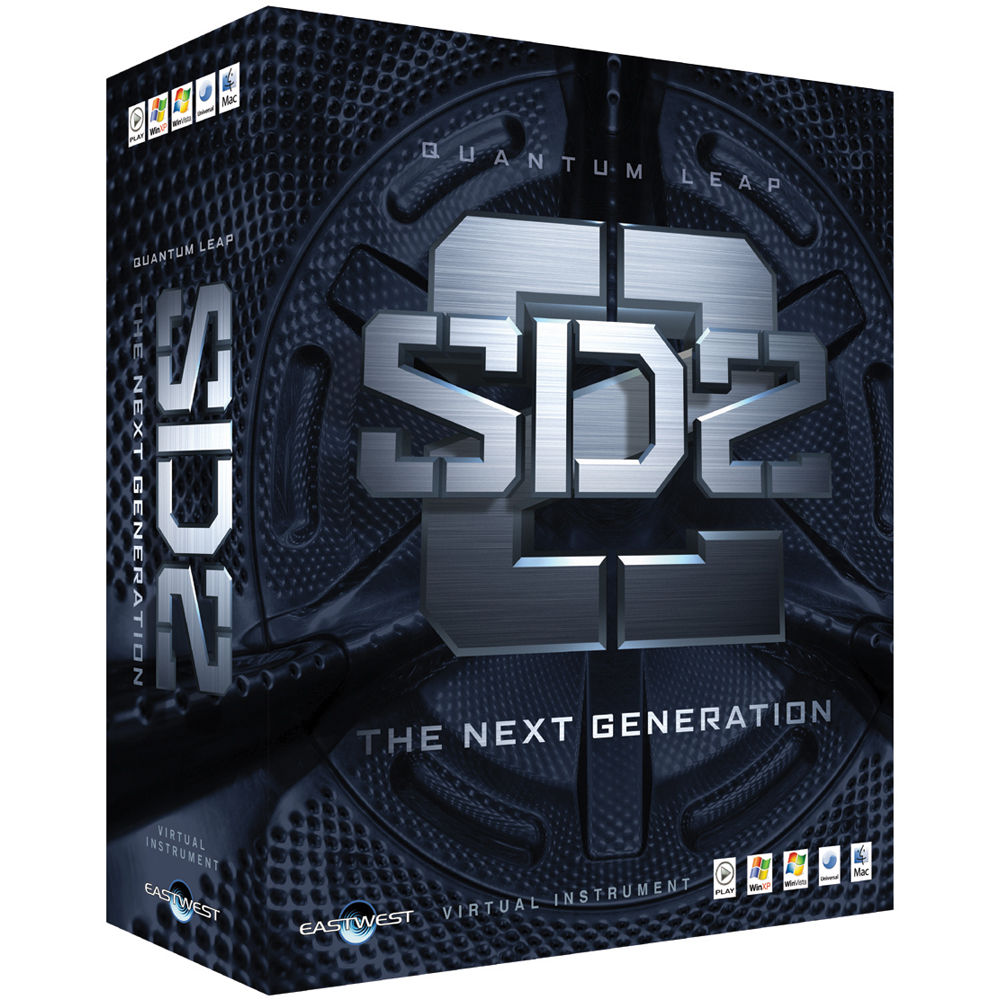
EastWest Stormdrum 2 Pro Bundle Mac PC Instrument eLicense
Save: 47% off
Akai CD3000 Rack Sampler Used
The S-series samplers from Akai are most likely the best 16-bit samplers in the world. The most radical feature about these great samplers is that they are very synth-like. Aside from outstanding sampling specs such as 44.1kHz 16-bit stereo sampling with tons of RAM (8 to 32 MB) and extensive editing capability, the S3000 series have excellent synth-like filters with resonance, 32-voice polyphony, full digital onboard effects (delay, chorus, reverb, etc.) two LFOs, and complete MIDI implementation.
The Akai CD3000 was the first and only sampler to include a built in CDROM drive. Not only can it load sounds from CDROM in a variety of formats, it can also sample directly from audio CDs entirely in the digital domain. The CD3000 is another proud edition to the entire Akai S3000 series workhorses.
The Akai CD3000 was the first and only sampler to include a built in CDROM drive. Not only can it load sounds from CDROM in a variety of formats, it can also sample directly from audio CDs entirely in the digital domain. The CD3000 is another proud edition to the entire Akai S3000 series workhorses.
The CD3000 features 16 bit linear sampling at 44.1kHz and 22.05kHz. A maximum of 16meg of memory can be fitted, although the unit can be modified to accept 32meg. The unit has 32 voices of polyphony with a maximum of 255 samples and 254 programs. The filters are digital 12db/oct low pass with resonance, and although the filter slope is not as steep as I'd like, the sonic benefit of resonance is worth the tradeoff. The CD3000 also has two multistage envelope generators, two LFOs, and a variety of modulation options. The effects, while limited, are of high quality and include chorus, delays, flangers, and other time-based effects. The large 320x240 backlit display and eight soft buttons makes editing a breeze. Also available for data entry is a numeric keypad, cursor keys, and a rotary encoder. The CD3000 has a ten outputs consisting of a stereo pair and eight auxiliary outs. The CD3000 model comes with SCSI standard, however other S3000 series options such as SMPTE, an internal hard drive, and AES and SPDIF digital I/O are not available.
Real World Interfaces have the M32S3 32meg memory board for the CD3000, increasing its memory to 32meg up from the previous 16meg limit.
$350.00Alesis D4 Drum Module Used
Get This Alesis D4 Drum Module with power supply & manual for $180.
The D4 was an affordable and fully professional Drum and Percussion sound module. It featured 500 drums sounds, sampled at 48kHz and stored on an internal ROM chip. The sounds cover the whole gamut, from great acoustic drum types to electronic drum sounds. Orchestral and ethnic percussion sounds and various percussive effects are also available. There are 21 programmable drum kits as well. And the D4 has full 16-channel MIDI implementation.
The D4 has 12 trigger inputs allowing drummers to trigger its sounds from acoustic or MIDI pads. Engineers and musicians can also trigger drum sounds from the D4 using the trigger inputs and any external sound sources from tape or other studio gear. A hi-hat pedal jack allows use of a footswitch to create more realistic hi-hat effects. There are also 4 independent outputs for either 4 mono outs or 2 stereo outs. The D4's only limitation, is editing. Drum sounds can only have their tuning, panning and respective volumes edited. However, drums can be assigned to special groups so that special drum characteristics can be created such as closed hihats cutting off open hihat sounds, etc.
$180.00Alesis Nano Bass Used
Alesis Nano Bass, Power Supply and Manual
Every Bass Sound You Can Think of...All in a Single Package.
Bass is the driving force behind today's energy-packed dance, pop and rock music. Whether you're a songwriter using MIDI sequencing or a performer needing to pump-up the low end, the solution is the Alesis NanoBass™. It offers 256 high-quality preset bass programs within its four megabyte sound library. There's a great selection of synth bass sounds for dance music styles...bass and drums, techno, jungle, acid, hip-hop, house and R&B basses, many with exciting resonant filter sweeps and other cool modulation sounds built into the samples. Both vintage analog and cutting-edge bass synth sounds are included. The NanoBass also contains plenty of traditional bass sounds for rock, pop, fusion and jazz music, including punchy rock electrics, smooth fretless bass, rich acoustic uprights and many more. Like all Alesis synths, the NanoBass offers true 64 voice polyphony and high-quality 16-bit 48kHz linear samples for supreme-quality sonic performance with no voice robbing. Each program also features built-in Alesis effects that you can change using the convenient front panel controller
Features
- 256 high quality sounds
- 48kHz linear samples
- 64 voice polyphony
- Built in effects
- Front panel controllers
- Compact size
Specs:
- Sound Generation Method: 16 Bit Linear 48kHz Sample ROM
- Synthesis: QS Composite Synthesis ™
- Voices: 64, each with sweepable lowpass filter, 3 envelope generators, 3 LFOs, programmable effects send and QS Modulation Matrix, dynamic voice allocation
- Available Waveform Memory: 4 MB
- Program Memory: 256 Preset
- MIDI Connections: MIDI In, MIDI Out/Thru
- Audio Outputs: Stereo L and R outputs
- Power: 9VAC External Transformer, UL and CSA Approved
- Dimensions: (WxHxD) 5.5" x 1.75" x 4.5" (140mm x 39mm x 115 mm)
- Weight: 1.25 lbs. (0.6kg)
Alesis Nano Synth Used
Alesis Nano Synth Power Supply and Manual
Don't let its compact design fool you...the NanoSynth™ is a powerful sound creation tool that offers features and sonic quality that go far beyond other modules in its price range. The NanoSynth's 8 MB sound library includes 512 preset programs and 128 spaces for user-designed programs. Pianos, organs, cutting-edge and vintage synth sounds, strings, brass, winds, guitars, drums, percussion and much more are offered within this sonic collection. Fifteen complete drumsets and an entire bank of sounds are arranged in the General MIDI hierarchy, making it easy to set up standardized creation/playback of music and multimedia projects. The NanoSynth's true 64-voice polyphony and 64-part multitimbral response across its 16 MIDI channels lets you create lush, intricate orchestrations. Built-in Alesis digital multieffects include great-sounding reverb, chorus, distortion, delay, rotary speaker simulation and more. IThe NanoSynth offers a built-in serial computer port, RCA Stereo Outs as well as audio inputs on phono (RCA) plugs so you can use it with a sound card on your computer. Also, its MIDI In and Out/Thru connectors enable you to use the NanoSynth for sequence recording and playback or to connect with MIDI software tools.
Features:
- 512 Preset, 128 User programs
- 48kHz linear samples
- 64 voice polyphony
- 16 part multitimbral
- GM compatible
- Built in effects
- Front panel controllers
- Compact size
Specs:
- Type : Sample playback synthesizer module
- Keys: N/A
- Polyphony : 64 voices
- MIDI Channels : 16
- ROM : 8MB
- Sounds : 512 preset 128 user programs
- Samples : 16 bit 48kHz Linear samples
- General MIDI : GM compatible.
- Effects : On board effects, based on the Alesis Q2 FX processor
- Drums : 15 Drum kits, rhythm loops
- Input / Output : Stereo L and R (RCA) Out, Stereo L and R (RCA) Inputs,
- MIDI IN, OUT/THRU, Serial Port with MAC/PC switch
- Controls : 5 front panel knobs : Volume, FX, MIDI Channel, Program Group and Program.
- Dimensions : 5.5" x 1.75" x 4.5" (140mm x 39mm x 115 mm) - 1/3 space rack module.
ASR-10 Bernoulli Drive with ASR-10 Demo files
ASR-10 Bernoulli Drive with ASR-10 Demo files
SCSI Bernoulli drive with a blank disk and disk loaded with files for an ASR 10. Apparently was supposed to be used to demo the ASR-10 in a music store. Don't know if it works or not but appears to be new.
$40.00Emu Proformance Piano w/ power supply & manual USED
Emu Proformance Piano with power supply and manual
RACK half unit all made of plastic easy to carry around.
The expander is really basic and has no display since all available parameters can be set directly from the frontal panel, you can't go wrong with five knobs:
1 - Volume output
2 - Fine master tuning
3 - Transpose note (± 1 or 2 octaves)
4 - Midi Channel select (1-16)
5 - Patch select
Back panel has just a few connections: MIDI I/O , a Stereo outputs and AC.
Basically a slimmed Proteus 1 generator with no edit facilities,wavetable mainly focused on Piano and Rhodes sounds. The voice generator manages 32 digital voices polyphony and it based on a non-expandable 2Mb ROM samples coded at 39 Hz at 16 bits resolution.
MEMORY 15 presets ROM + 16 in PLUS option no RAM and NO storage.
It cannot save any sounds... but you cannot edit them neither!
MIDI basic with MIDI Control change: Pitch bender, Modulation, Sustain, Sostenuto (CC#66) Soft (CC#67)
3X different play modes: Poly/ Mono and Multitimbral.
FX / FILTER /EG/LFO : none
E-mu Proformance 1 sound list
* Dark Grand
* Classic Grand
* Mellow Ivory
* Rock Piano
* Honky Tonk
* Mellow Chorus
* Modern Rock
* Dark Touch
* Rock Touch
* Mellow Touch
* Classic Touch
* Mellow Patterns
* Rock Patterns
* Dark Patterns
* Classic Patterns
$100.00
EMU Proteus 2 Orchestra Rack Module
In excelllent condition, used in a smoke free studio. comes wtih power cord, but no manual.
In 1990, the Proteus 2 was released with 4 MB of purely orchestral sounds - the same sounds from the Plus Orchestral ROM card, which also happen to come from the EIII library. This was the first time really high quality sounding orchestral sounds could be had in a dedicated sound module.
The Proteus 2 offers professional features such as full 16-part MIDI multitimbrality, 32-voice polyphony, 16-bit ROM samples, six individual polyphonic outputs and extensive editing and modulation capabilities. It came with 192 preset. 64 are user presets, the are ROM presets There is also E-mu's RMidiPatchS that allows direct real-time control of over 40 parameters for keyboard, midi controllers, internal LFOs and envelopes.
$199.00Ensoniq ESQM Synth Module Used
This Ensoniq ESQM is from the original owner who used it only his smoke free studio. It's in excellent condition.
The ESQM was Ensoniq's highly affordable and impressive digital synthesizer module , released in 1987. Although the waveforms are digital in nature, the filters are all analog. In fact, for a digital synth the ESQM has many good old analog-synth features such as a ring modulator,and oscillator-sync. The envelopes and LFOs are can be freely routed to each DCO, VCA and or VCF. There are 40 preset sounds which are the usual not-so-great sounds.
The ESQM features eight voices with three oscillators per voice, and is fully multi-timbral. The wave ROM accessed by the soundchip contains 32 different waveforms, including standard synthesis waveforms such as sawtooth and square, but also sampled ones such as "piano", "voice", or "bass" (note that, although multi-sampled, these are still single-cycle waveforms, not true samples as such).
Each oscillator can be independently volume-controlled via its dedicated digitally-controlled amplifier, or modulated with an LFO, or an envelope generator. Oscillator amplifiers provide room to be overdriven, and thus produce moderate analog distortion as an additional effect on, for example, synth leads or organ sounds.
ESQ-1 has three independent LFOs, and three independent envelope generators that can be programmed to modulate any number of parameters. A fourth envelope generator is hardwired to the main output amplifier (but it can still be used as a modulation source for other parameters too), which also provides programmable panning for each voice. Its envelope generators follow the level/rate model and therefore provide more flexibility than the ADSR type of other machines. They are programmed with precise level/time settings, and like many other synthesis parameters, they allow use of negative values. Furthermore, they offer some rarely seen features (such as the option to tune the attack portion of the envelope with regard to keyboard velocity, enabling a voice to have a soft attack when played softly, and snappy attack when played hard) plus scaling of the envelope timing with the key number, thus easily enabling more natural envelope behavior.
Its low-pass filters are analog (CEM 3379), but digitally controlled, and thus can be modulated by a significant number of sources, including LFO, envelopes, velocity, aftertouch, modulation wheel, et cetera. Even though the filter resonance can be driven to extreme effect, the resonance setting features only 32 steps, and the filters do not self-oscillate. The synthesis engine is capable of processing polyphonic aftertouch over MIDI.
Furthermore, Ensoniq ESQ-1 features amplitude modulation, oscillator sync, monophonic mode, and portamento.
The ESQ-synths have been used by Anything Box, Skinny Puppy, Jean-Michel Jarre, and Steve Roach.
$349.00Ensoniq Mirage DSK-8 61 Note Sampler Keyboard Used
This Ensoniq Mirage DSK-8 (second version) is from the original owner who used it only his smoke free studio. It's in excellent condition. Includes the sustain pedal (model FSW-1), the sequencer expander card (model SXQ-1) and the laminated Parameter Reference Card.
This Gray DSK-8 was the second-generation Mirage, in a metal case, with a dark gray paint job and a much-improved Fatar keybed. You can easily distinguish these Mirages by the smaller buttons - now gray, yellow, white, and black. Both versions of the DSK-8 sold for $1695, and included two sound disks, a sustain pedal, the Musician's Manual, the Advanced Sampler's Guide, the Formatting Disk, and a laminated Parameter Reference Card.
Back panel connections were mono Audio In and Out jacks, a Sync jack, MIDI In and Out/Thru conectors, a Foot Switch jack for the sustain pedal, and an expansion port on the back panel for either an ISF-1 Input Sampling Filter or the SQX-1 Sequencer Expander. The Sync jack on the back panel was intended to sync the Mirage's sequencer to an external clock source; since the sequencer is all but useless, the Sync jack and circuitry were dropped on the later DSK-1.
The Mirage was Ensoniq Corporation's first product, introduced in 1984. Priced below $1700 with features previously only found on more expensive samplers like the Fairlight CMI, it became a best-seller. The Mirage was the earliest affordable sampler-synths.
The Mirage was an 8-bit sampler featuring a 61 key velocity-sensitive keyboard, a two-digit LED display, extensive MIDI implementation, analog filters, and a 333-event sequencer. It had 128kB of RAM (64kB for each keyboard halve) and it was not expandable. Sample rate was variable from 10kHz to 33kHz with available sample time ranging from 2 to 6.5 seconds accordingly (for each keyboard halve).
It included a built-in 3.5 inch SS/DD floppy drive, which was used to boot the operating system as well as store samples and sequences. Each disk had a copy of the operating system and could be used as a boot disk, thus there was no need for a separate boot disk.
Each disk stored six samples and up to eight sequences. The keyboard was 'pre-configured' into two halves, each functioning as two independent instruments, though the split point could be moved. This made it easy to have one sound for the right hand (an 'upper' sound) and another for the left (a 'lower' sound). However, the standard OS could not move samples between keyboard halves. Thus the diskette could save three 'upper' sounds and three 'lower' sounds. Ensoniq later made an alternative OS available called MASOS which traded off performance features for editing features, including the ability to copy an 'upper' sound to a 'lower' sound and vice-versa.
Using a feature called multi-sampling, the Mirage was also capable of assigning multiple samples to different keys across its keyboard. Using this technique, the Mirage essentially turned into a polyphonic mult-timbral MIDI sound module complete with a velocity-sensitive keyboard that could be used to drive other MIDI sound modules as well its own sound engine. Its complex programming system which is based on hexadecimal coding made it difficult to program and record samples, however, a library of sounds became available for it so many users never had to learn to program it.
The Mirage sampler has become a sought-after item due to its low bitrate converters, behind ther Akai MPC60's and S900's. Tthere is a certain amount of nostalgia concerned with the Mirage, particularly with its sample library which still stands the test of time. It has been used by Skinny Puppy, Vangelis, Jimmy Edgar, and Jimmy Jam and Terry Lewis.
There were three versions of the Mirage. The first had a spongy feeling keyboard and large square black buttons. The second had a better-weighted feel keyboard and small calculator-like buttons. The third was shorter and in a plastic case, had a non-weighted keyboard and sold for about $1300 USD.
$199.00Kawai MAV8 4x8 MIDI Patchbay Used
KAWAI MAV8 4x8 MIDI Patchbay Used in good conditioin.
The MAV-8 is a 4x8 patchbay as rack device (19"). Each of the 8 outputs can be linked or switched off to one of the 4 inputs. The routing is done by moving the MIDI Out Slider to the MIDI In Row in a X Y Matrix, so you can easily see the routing.
3 MIDI inputs and 7 outputs are situated on the rear to minimize the cabling. MIDI In 4 iand MIDI OUT 8 are situated on the front for those times when you need to quickly add a MIDI device to your system.
Therefore is the MAV-8 an indispensable and an very inexpensive helper in your daily fight with the MIDI connections.
A AC adapter is included.
$70.00Korg M1 61 Key MIDI Workstation
Korg M1 Keyboard in good condition. Some cosmetic issues. Here's some info about this classic synth from the 80s and early 90s.
In a marketplace where a synth that sells a few tens of thousands of units is considered a success, one that reportedly sold 250,000 surely exceeds a manufacturer's wildest hopes. Such an instrument was the Korg M1, the widely-beloved Sample + Synthesis workstation that can rightly be called the most popular synth of all time. Released in 1988, it was manufactured until 1995 -- and seven years is a very long time in music technology. Although Korg won't verify the quarter of a million units, they do say that 100,000 were manufactured during the first two years of the M1's life, serial number 100,000 having rolled off the production line in November 1990.
The Korg M1 is a 16 voice, 8 part multitimbral, music workstation. The M1 featured a MIDI sequencer and a wide palette of available sounds, which allowed for the production of complete musical arrangements.
The M1's synthesizer engine consisted of one or two digital oscillators per patch with sampled acoustic waveforms are stored in memory. A total of 16 oscillators were offered, leading to a maximum 16-note polyphony (using only single-oscillator patches). This reduced to 8-note polyphony when using double oscillator programs. The basic sample sound was then processed by a simple digital low pass filter, and then fed into the digital amplifier. Envelopes and LFOs, along with keyboard tracking, were the main controllers for those blocks. Because no interaction between the oscillators was provided (unlike Roland's 'structures,' for example), dual-oscillator patches essentially ran the two oscillators in parallel.
The filter did not offer resonance, but the need for a dramatic filter was diminished by the onboard sample library's wide variety of acoustic, synth, and exotic sounds. The M1's internal 4 MB waveform ROM was a huge amount of memory by 1988 standards, when the typical amount of RAM memory in desktop PCs was 512 or 640 Kbytes. Waveform ROM contained sounds which are still in use even today, especially the compressed acoustic piano (used on countless records of the time and later adopted by dance producers), pick and synth basses, strings, realistic vocal samples, brasses, and acceptable drum kits. For the first time, ethnic and exotic sounds from world locales (particularly Asian) were offered as standard. Two presets from the M1 were used extensively in 90's house and rave music, namely "Piano16" and "Organ2."
$550.00Korg T1 88 Key Workstation with SKB Case
In good condition has some small cosmetic issues see the pictures. Includes SBK case.
The Korg T1 is the top of the line M/T Series synth. It has a full size 88 key weighted action keyboard and all the features of the EX upgrade standard. It became the master keyboard for many pro musicians because of it's "feel", A1 sound, and multiple Midi ports. The $4000.00 price tag probably had a lot to do with making it an exclusive board as well.
Sonically the synth is identical to a T3 EX/T2 EX. What you're really paying extra for is the full size keyboard and the weighted action. This was the only synth in the M/T Series line that could be upgraded from joystick to controller wheels. (if you can still find the upgrade kit).
$900.00 The Electronic Music Box
The Electronic Music Box



